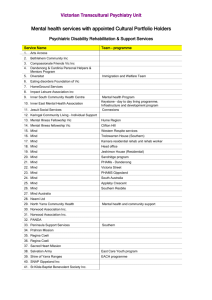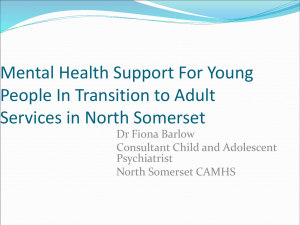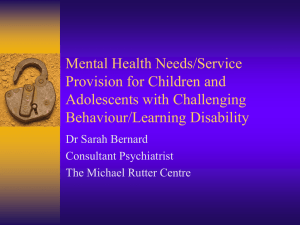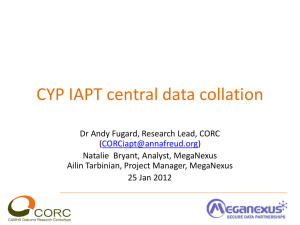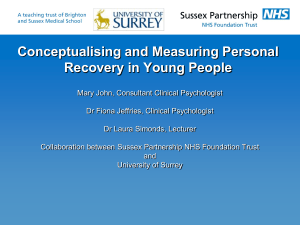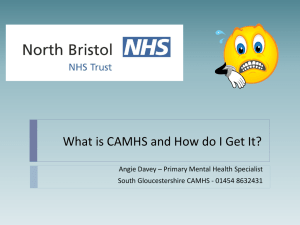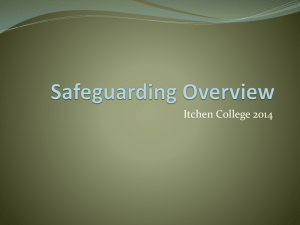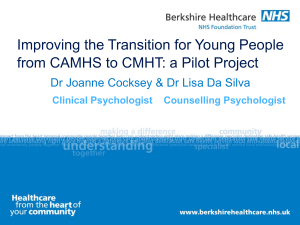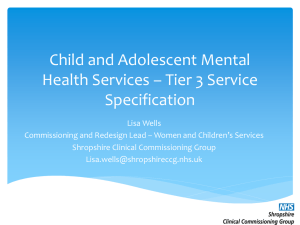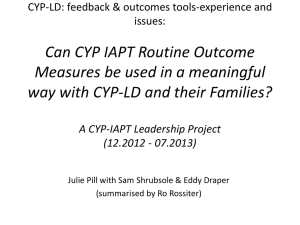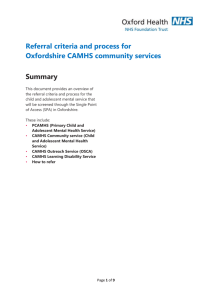Transitions -CAMHs Dr Wendy Woodhouse
advertisement
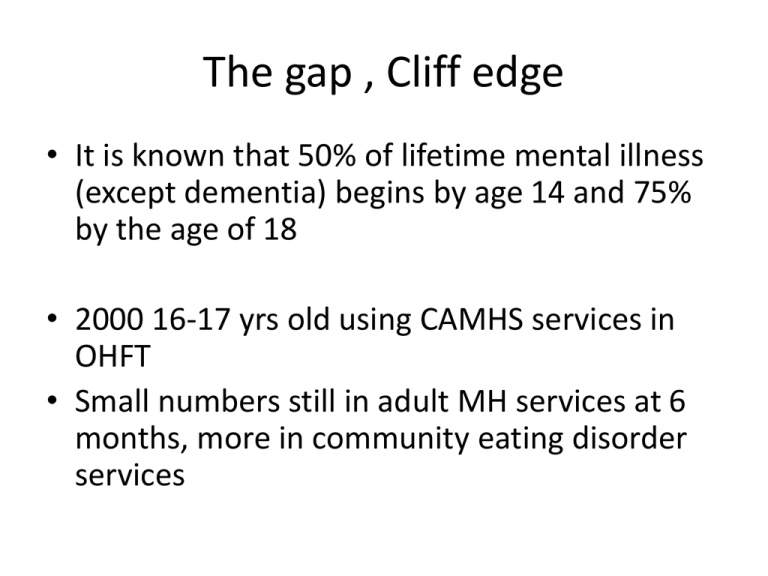
The gap , Cliff edge • It is known that 50% of lifetime mental illness (except dementia) begins by age 14 and 75% by the age of 18 • 2000 16-17 yrs old using CAMHS services in OHFT • Small numbers still in adult MH services at 6 months, more in community eating disorder services Where have all these young people gone? • They got better • They went to uni • They use other services But, mental health problems overrepresented in social disadvantaged groups Why is there a GAP ? • AMHS different thresholds • Different cultures and expectation • Multiple transitions, health, education, employment, NEET • Poor experience • SCR, high risk of crisis presentation, increased risk period • Silos of commissioning Track study, Singh et al 2010 • The optimal transition criteria were developed from an audit of CAMHS transition protocols18 and literature on good practice in relation to continuity of care.19 These criteria included: • information transfer (information continuity): evidence that a referral letter, summary of CAMHS care, or CAMHS case notes were transferred to AMHS along with a contemporaneous risk assessment; • period of parallel care (relational continuity): a period of joint working between CAMHS and AMHS during transition; • transition planning (cross-boundary and team continuity): at least one meeting involving the service user and/or carer and a key professional from both CAMHS and AMHS prior to transfer of care; • continuity of care (long-term continuity) – either engaged with AMHS 3 months post-transition or appropriately discharged by AMHS following transition. • Sub-optimal transitions were those that failed to meet one or more of the above criteria. Closing the gap DOH 2014 • Outcomes led services for multiple needs personalised transition plans that include, for those young people who do need to transfer to adult services, joint meetings with CAMHS and adult mental health services. For those who do not, it will include information on how to access services if they become unwell. We will need to take a cross-service approach, involving housing, employment services and social workers – and not least, the young person themselves – so that we can ensure they get the support they want. At all What works? • • • • • Transitions policy New specification for commissioners Transitions clinic Services to 25 Services to fill the gap Standards suggested • Transitions policies agreed with CAMHS and AMHS • Multimedia transition resources, smart phone apps • Transitions care plans and care coordinator • Access to peer support drivers • require integration with social care and educational planning processes as set out by the proposals within the Children and Families Bill 2013 (for example the Birth – 25 Education, Health and Care Plan), Children (Leaving Care) Act 2000 and the Children and Young Person’s Act 2008. Developments • • • • • Draft specification for transitions Economic study Martin Knapp et al 2014 Cambridge CLAHRC study Aristidou,2011 Early intervention in psychosis pathways Youth project board Outreach Services for Children and Adolescents Osca to 25 • • • • • • Pilot, up to 25 YP EBP and other difficulties Outcomes, IAPT AMH ooh and admissions Gaps, housing, education, Specific needs, CSE Future? • Youth service, expand EIS services • Outcomes led care plans • Multiagency services to address life skills, educational catch up, housing • Student health services • Pathways that YP can follow and access
